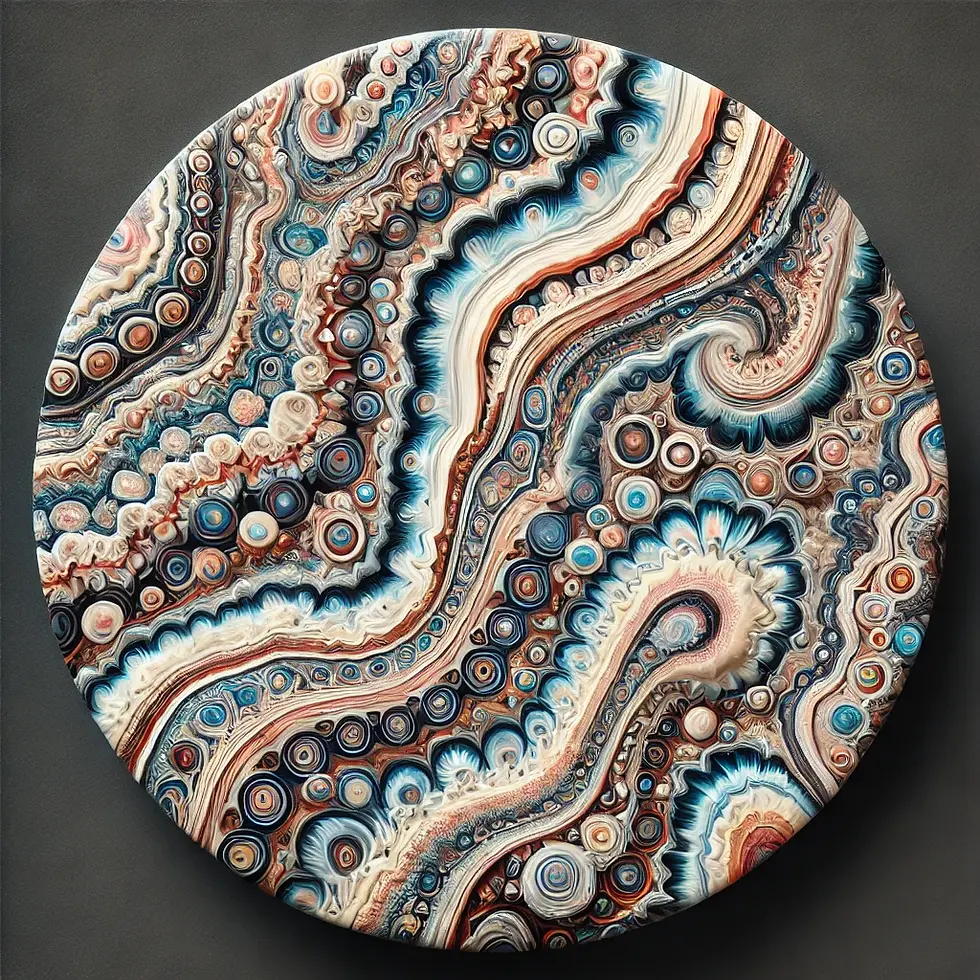Understanding the Geological Significance of Agate
- WonderDig

- Jul 22, 2024
- 2 min read
Updated: Oct 13, 2024
Agate is a variety of quartz known for its vibrant colors and unique banding patterns. Its geological significance extends far beyond its aesthetic appeal, providing insights into the Earth's geological history and processes.

Formation of Agate
Agate forms in volcanic and metamorphic rocks where silica-rich solutions seep into cavities and fissures. Over time, these solutions deposit silica in layers, creating the distinctive bands seen in agate. Each band represents a separate episode of deposition, influenced by temperature, pressure, and the presence of impurities. These impurities, such as iron, manganese, and chromium, contribute to the wide range of colors and patterns found in agate (Geology Science) (StudySmarter UK).
Discover Real Gemstones & Crystals – Shop Now!
Explore our collection of gemstone dig kits, crystal gifts, and geodes. Perfect for adventurers and crystal lovers alike! Find something unique, from stunning amethyst clusters to our best-selling Jumbo Dig Kit.


Types of Agate

Agate comes in various types, each with unique characteristics and geological significance:
Blue Lace Agate: Known for its soothing blue and white bands, promoting tranquility (Topaz Tarot).
Moss Agate: Features green inclusions resembling moss, symbolizing new beginnings and growth (Geology Science).
Fire Agate: Displays iridescent colors that seem to glow, created by thin layers of iron oxide (Geology Science).
Crazy Lace Agate: Characterized by its intricate, colorful patterns, often found in Mexico (Geology Science).
Dendritic Agate: Contains tree- or

fern-like inclusions of manganese and iron oxides, making each piece unique (Geology Science).
Fossil Agate: Contains fossilized remains, providing a window into ancient ecosystems and geological processes (Geology Science).
Geological and Cultural Significance of Agate
Agate deposits are found globally, including notable locations in the United States, Brazil, India, and Mexico. These deposits help geologists understand past volcanic activity, hydrothermal processes, and the movements of ancient glaciers and shorelines (Geology Science) (StudySmarter UK).
Historically, agate has been used for tools, art, and jewelry. Its hardness (7 on the Mohs scale) and vibrant appearance made it a valuable material for prehistoric tools and decorative items. In many cultures, agate is believed to have healing properties and is used in spiritual practices (StudySmarter UK) (Gitche Gumee Agate and History Museum).

Practical Applications
Agate is not only valued for its beauty but also for its practical applications:
Jewelry and Art: Due to its durability and striking appearance, agate is commonly used in jewelry and decorative pieces (Geology Science).
Geological Studies: Agate helps geologists understand the thermal history and geological processes of the regions where it is found (Geology Science).

Love Crystals? Watch Our Quick Gem Discovery Videos!
Get bite-sized crystal knowledge and gemstone fun with our YouTube channel. Discover the magic of crystals in less than 60 seconds!

















Comments